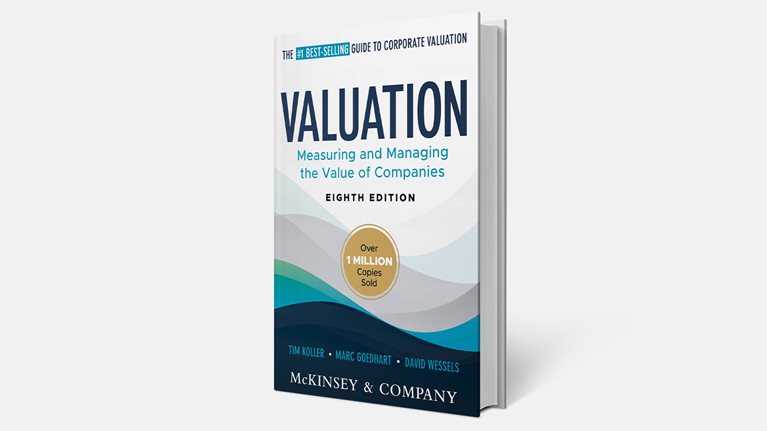To create excess shareholder value from assets, senior leaders must know “when to hold them and when to fold them.” McKinsey research highlights the value of active portfolio management—or rotating a company’s assets through both acquisitions and separations. This strategy positions companies for exposure to high-value opportunities while shedding assets for which they’re no longer the best owners. Companies that pursue it have been shown to boost excess TSR by 3.5 percent.1
Separating noncore assets that are performing well can be a relatively straightforward way to create value. Businesses that are already in the black are highly attractive to potential buyers and investors. And McKinsey’s research indicates that when separations are executed quickly and effectively, they can unlock substantial value for both the owner and the separated entity.2
The path to separation is often more complex for underperforming noncore assets, however. These businesses may require restructuring or transformation before separation. By addressing operational inefficiencies and unlocking latent potential, companies can position these assets for a more successful separation and maximize their value. For example, one US pulp-and-paper manufacturer undertook a multiyear transformation of a business unit before divesting. The transformation contributed to about 30 percent of the business unit’s annual EBITDA the year it was sold, which boosted the eventual deal price. Potential buyers said they were attracted by the various improvements and capabilities that came out of the transformation.
All went well for that manufacturer, but transforming and then separating an underperforming, noncore asset has pitfalls. The process can require substantial time, effort, and investment. When deciding whether to transform before separation, leaders must carefully consider the parent company’s circumstances and objectives, overall market conditions, and a few other factors. In some cases, the costs and complexities may outweigh the potential benefits, making it more practical to proceed with the separation as is.
But if companies do choose to pursue a transformation as part of a separation, there are several steps that they can take to create more value from the asset and increase the odds of attaining a favorable deal. Based on our experience in working with clients across industries, leaders should work through three distinct phases: assessment of the full potential, bottom-up planning, and transformation implementation (table).
A phased review can help determine if transforming an underperforming unit before separation would boost deal value.
| Phase | Action | Outcome |
| 1: How good could we be? Assessment of full potential | Establish trajectory and full potential of business unit using an investor-due-diligence approach | Comprehensive understanding of opportunity |
| 2: How do we get there? Bottom-up planning | Develop transformation plan (with financial, operational, and strategic objectives) fully owned by line leaders | Bankable plan or fully integrated set of weekly deliverables |
| 3: Let’s make it happen Transformation implementation | Launch full-scale effort to drive value to bottom line | Rigorous delivery of new capabilities and enhanced performance |
The first phase is a comprehensive assessment of the business unit’s realistic potential—that is, looking at the asset through the eyes of investors and conducting an honest evaluation of what it could achieve. This clarity serves as the foundation for the second phase: detailed, bottom-up planning. Here leaders develop a step-by-step plan for transforming and unlocking the business unit’s potential, ensuring that the plan incorporates all the financial, operational, and strategic objectives for both the transformation and the separation. The final step, implementation, is where the plan is brought to life, setting the business unit on a path to maximize its value ahead of a separation.
Assess the realistic potential of an asset
Noncore businesses often underperform precisely because they typically don’t get the same amount of management attention or capital that core business units do. Therefore, their true values aren’t well understood. In such situations, it’s critical to assess their realistic potential.
Companies should evaluate the full potential of the business unit as an investor—that is, by reviewing current performance and trajectory, identifying potential improvement initiatives, assessing the feasibility of achieving the desired improvements, and setting rough timelines for improvements. This exercise gives leaders an opportunity to reset their thinking about the asset by viewing it in the way that potential buyers might rather than continuing to look at it only in the internal constrained environment.
In our experience, assessing the realistic potential of the asset is a no-regrets move. It’s the minimum that all leaders should do before separating an underperforming asset or, in fact, any time they are looking to meaningfully improve the performance of an asset or business unit. Through this process, leaders can gain a better understanding of the opportunities associated with the asset in question and an initial set of ideas for ways to create more value from it. What’s more, leaders can use the resulting assessment to help counter the typical discounts that buyers or investors seek when an asset is brought to market.
Leaders at one logistics company, for instance, were considering their strategic options following a period in which the company experienced flat earnings for eight quarters straight and a substantial increase in debt. They decided to divest an underperforming, noncore business unit. In their assessment of the unit’s realistic full potential, they found, among other things, that it had a considerably heavier cost structure than comparable “pure play” businesses and a poorly defined customer value proposition.
The company’s leaders used these findings to create a proposed set of initiatives to establish a top-quartile cost structure for the underperforming asset and a plan to accelerate revenue growth through better communication of the business unit’s end-to-end value proposition. They shared this plan with potential buyers and investors. In this way, they could review offers against what they had systematically determined was the full potential of the asset.
Concurrently engage in bottom-up planning
While assessing an underperforming asset’s potential, companies should concurrently engage in bottom-up planning for both transforming and separating it. Building on the process conducted in the first phase, leaders can form and then validate specific ideas for how the asset could create more value, including an exploration of the feasibility and risk of separation and of the timing (how and when ideas for improvement could be implemented). They may even begin to implement near-term performance improvements—the quick wins—to accelerate the impact of the transformation.
The output of this second phase should be a “bankable plan”—that is, an overview of the specific actions, timing, and ramp-up of improvements, financial targets, operating model, and other elements required for the asset to achieve its full potential. Such details can help companies in their negotiations with potential investors and can serve as part of the blueprint for the separation. With the creation of a bankable plan, the new owner (or the new management team, in the case of a spin-off) would have a detailed turnaround plan that it could execute almost immediately. If any near-term improvements have already been implemented and their impact noted, the parent company can demonstrate evidence that the bankable plan is valid.
For example, one chemical company decided to spin off an underperforming, noncore specialty business into a stand-alone public company. Its ROIC had stagnated extensively relative to peers, and its growth had slowed. Leaders’ full-potential assessment revealed noteworthy opportunities for near-term cost reductions across the entire income statement, particularly in procurement, and for longer-term improvements in capital management and deployment.
The leaders identified and pursued several quick wins. After separation, with some of those near-term improvements already positively affecting the bottom line and with a bankable plan in the hands of the new management team, the newly independent company took off. Its operating EBITDA improved by 25 percent within two years of spin-off and by 50 percent within three years, and its peer-indexed TSR doubled two years after spin-off.
Implement transformation and separation initiatives
The final step of a phased separation evaluation is the actual implementation of transformation initiatives, typically completed over 12 to 24 months. This phase marks the culmination of a company’s detailed assessment of the value to be captured from a noncore asset through both near-term improvements and longer-term initiatives aimed at achieving full potential. At this point, leaders should have a strong sense of the trajectory required to transform the business unit and the momentum that they can capitalize on to accelerate separation of the asset.
A business to be separated is sometimes truly in distress—for instance, with a record of poor execution or with negative or stagnant revenue and profit growth in what’s otherwise a well-performing industry. In such a case, investors will likely need to see real evidence of a turnaround before underwriting an acquisition or spin-off. This third phase of the process can provide that evidence.
That’s exactly what was required by a $2 billion natural resources company that was experiencing negative EBITDA and an upside-down balance sheet. Following voluntary bankruptcy, the company mounted an end-to-end transformation program focused on restructuring the organization, substantially trimming costs, and generating cash. It eschewed business as usual, reexamined all parts of the business (including finances, operations, capabilities, organizational health, workforce composition, and customer experience), determined where pockets of value could be trapped, and created an improvement plan. Through that disciplined transformation program, the company emerged about 12 months later as two independent businesses with an achievable value enhancement plan. The initiative ultimately delivered more than $200 million of in-year value creation and a healthy balance sheet.
Determining whether to restructure a distressed asset before separation can be complicated. Resources may be constrained; information may be lacking. Deal timelines can often be extended unexpectedly, and in some cases, a separation may not occur if a deal falls through. But conducting a phased exploration of transformation options can more clearly reveal operational complexities, cost concerns, and feasibility risks at various points in the decision process.
The strategy allows leaders to continually measure the anticipated values from transformation initiatives against market realities. They can then scale back transformation programs or even abandon a separation altogether when evidence suggests that such investments and efforts are no longer justified. By systematically reviewing an asset’s current state and the desired outcome, companies can not only navigate deal uncertainties but also unlock substantial value, whether a separation ultimately takes place or not.


